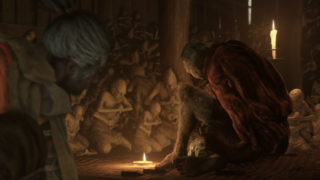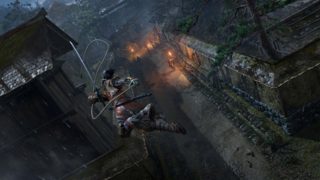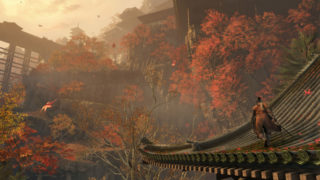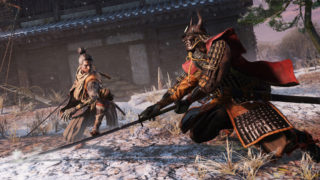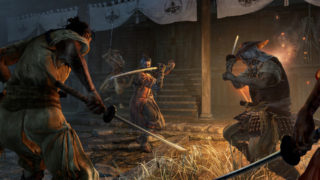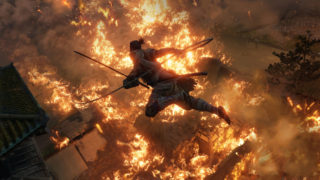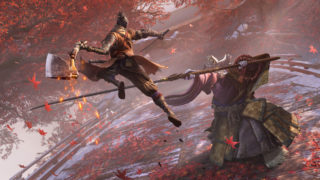Review: Sekiro is the fabulous culmination of From’s Souls learnings
It plays like its predecessors, but also feels different and fresh.
- Game Director
- Hidetaka Miyazaki
- Key Credits
- Yoshitaka Suzuki (Lead Programmer), Yuka Kitamura (Composer), Masaru Yamamura (Lead Designer)

No other developer is simultaneously revered and reviled by its customers to such a great extent as From Software.
Since 2009’s dark-as-midnight RPG Demon’s Souls catapulted the Japanese outfit into the games industry’s mainstream (its previous games had attracted a cult, mainly Japanese following), it has crafted a constant stream of masterpieces with one thing in common: a maddening, utterly pigheaded, yet thrilling refusal to countenance even the merest hint of compromise.

Since Demon’s Souls, From Software has been locked in a sort of sadomasochistic embrace with players. The sadism stems directly from that no-compromise approach: the developer’s games are ridiculously hard and deliberately unforgiving. In order to negotiate them, players had to discover their latent masochistic tendencies. Which, it turned out, took them down a path to supreme satisfaction.
Naturally, Sekiro cleaves tightly to the underlying template set by the Demon’s/Dark Souls/Bloodborne (aka Soulsborne) games, yet it changes enough detail, both within and around its gameplay, to feel fresh and different. In certain respects, it has been simplified. But you will still die when playing it, over and over again, before suddenly working out how to survive that seemingly impossible boss and taking delivery of an outrageous dopamine hit.
Story-wise, Sekiro: Shadows Die Twice differentiates itself nicely from the Soulsborne games. It’s reputed to have been loosely inspired by the 1998 PlayStation stealth game Tenchu (the IP for which has been owned by From Software since 2004), and accordingly adopts a late-1500s, Sengoku Japan setting, in which you play a shinobi known as the Wolf, serving a young noble who has been kidnapped (in the process of which the Wolf’s left arm was severed).
The Wolf’s quest to free his master – by taking down an entire army’s-worth of enemies and bosses on his own – is classic RPG fare, and Sekiro takes much more pains to generate something resembling a narrative thrust than any of the Soulsborne games. There are even flashbacks, the odd cut-scene and countless NPCs to fill in story blanks.
While Sekiro is as brutal and unforgiving as we’ve come to expect from a From Software game, it has plenty of striking innovations. Early on, the Wolf encounters a washed-up sculptor, who can be persuaded to break off from his obsessive buddha-carving to create useful prosthetic devices for the Wolf, whenever he comes across their raw materials. Those devices include an axe, an indestructible umbrella and tools that let you fire firecrackers and flames.
But the base ability, irrespective of whichever tool is fitted, is a grappling hook, which is a radical gameplay departure for a From Software game, and can only take you to prescribed points (which are plentiful and sensibly placed). So vertical elevation features heavily: you can grapple onto rooves, survey the myriad enemies you will have to take on, then start thinning them out with stealth-kills from above. Another gameplay departure is a stealth engine, which lets the Wolf launch stealth-kills from areas of long grass.
But whenever you manage to pull off a stealth-kill, you will soon be noticed by other nearby enemies, at which point the combat engine kicks in. Again, that has been tweaked extensively in comparison with the Soulsborne games, and while it retains a similar overarching feel, it has some very different emphases.
As well as chipping away at an enemy’s vitality, the Wolf must destroy their posture – a highly worthwhile exercise since, when you manage to do that, it opens them up for a deathblow (signified by the target-marker turning red, and a source of inordinate amounts of gameplay satisfaction).
“Sekiro cleaves tightly to the underlying Dark Souls template, yet it changes enough detail, both within and around its gameplay, to feel fresh and different.”
Since the Wolf is one-armed, he doesn’t have a shield but, instead, must block with his sword (or via other abilities that can be purchased using skill points acquired via XP). Time a block to perfection – the moment an incoming blow is about to land – and you’ll wreak havoc on an enemy’s posture, possibly bringing the chance for a retaliatory deathblow. But if your timing is slightly off, you’ll take a hit, your posture will be wrecked, and you’d do well to execute a dodge move and regroup.
The combat is unforgiving but satisfying: different enemies require different approaches, and you really have to think your way around the bosses, who are as fearsome as ever. The system brings a sense of momentum to each battle, and at times, you’ll have to regroup, top up your vitality and go again. As with the Soulsborne games, once you’re set upon by a mob, a swift death is the likeliest outcome.

While Sekiro does carry plenty of recognisable cues over from the Soulsborne games – it has differently named equivalents of Estus flasks and campfires – it abandons the chance to pick up the XP and loot you dropped at your previous death-point. Instead, whenever you die, half of your XP and the money you’ve looted is taken away.
There is one aspect in which Sekiro might sound more forgiving than its predecessors: when you die, you have a chance to resurrect with half your health. But even that has consequences: dying causes friendly characters (such as the sculptor) to contract a disease called Dragonrot, which infects more of the game-world the more times you die. From Software has hit on a cute means of emphasising its fetishisation of player-death.
While the combat feels fresh, the basic trajectory of Sekiro is just like those of the Soulsborne games: you’ll inch forward, 50 to 100 yards at a time, slowly working out how to defeat the enemies in your way. And then there are the bosses. They are absolutely evil, and Sekiro, in classic From Software style, gives you precious few clues about how to take them out.
“While the combat feels fresh, the basic trajectory of is familiar: you’ll inch forward, slowly working out how to defeat the enemies in your way.”
But slowly, after they’ve killed you umpteen times, the penny will drop and you will work out how to deal with them – a process that sometimes involves a bit of grinding in order to earn skill points for new abilities, or to acquire new prosthetic tools. You can sneak up on bosses and deliver a stealth-deathblow, but even that will only remove half their health – each one requires at least two deathblows. Sekiro does at least help with the grinding during its early stages by offering a parallel game path, in which the Wolf heads back in time and can harvest a bunch of useful items.
Sekiro is a fabulous game: it feels like the culmination of From Software’s modus operandi, honed relentlessly since 2009, and while it plays pretty much like the Soulsborne games, it also feels different and fresh. It looks more impressive, too, with some surprisingly lush environments and a colour palette which, unusually for From Software, extends beyond black, brown and grey.
Because it’s a From Software game, it isn’t for everyone – plenty of players will find it so outrageously hard that they will end up abandoning it in order to preserve their sanity. But if you’ve played and enjoyed a previous From Software game, you will love Sekiro.
And you will be well aware of the intense hits of satisfaction which can be teased from its landscape forged from feedback loops of frustration and despair. Like its predecessors, Sekiro will test your mental fortitude to breaking point. Embrace your inner masochist, take on its challenge and you’ll be amazed by the amount of enjoyment you can glean.
Sekiro is the fabulous culmination of From Software’s modus operandi, honed relentlessly since 2009. While it plays like its predecessors, it also feels different and fresh.
- Smart posture-based combat system
- Grappling adds a new dimension
- Great skills and prosthetics trees
- More coherent than expected story
- As ever, some will find it too hard
